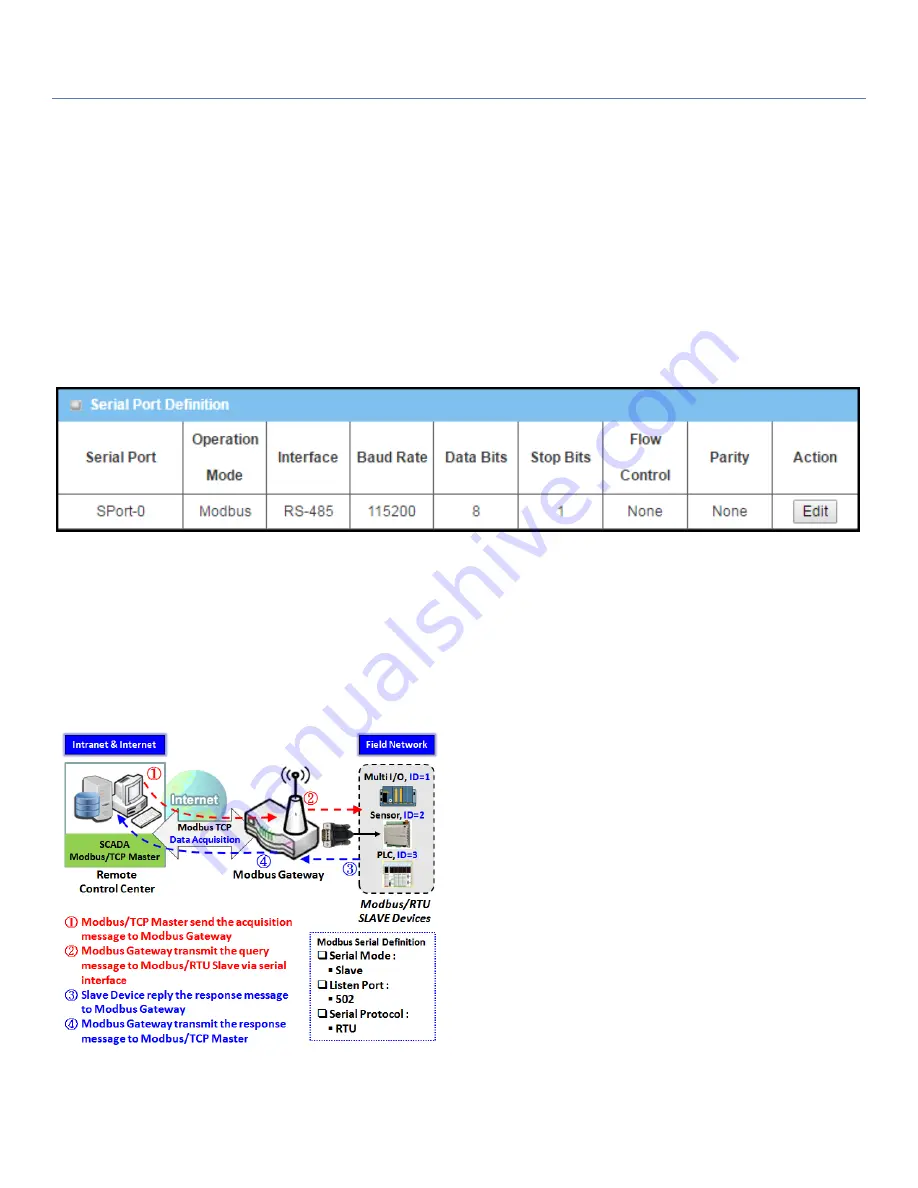
EW50 Industrial LTE Cellular Gateway
141
4.1.3 Modbus
Modbus is one of the most popular automation protocols in the world, supporting traditional RS-232/422/485
devices and recently developed Ethernet devices. Many industrial devices, such as PLCs, DCSs, HMIs,
instruments, and smart meters use the Modbus protocol as the communication standard. It is used to establish
master-slave communication between intelligent devices.
However, the Ethernet-based Modbus protocol is different from the original serial-based protocols. In order to
integrate Modbus networks, the IoT Gateway, including one or more serial ports that support RS-232 and RS-
485 communication interface, can automatically and intelligently translate between Modbus TCP (Ethernet)
and Modbus RTU/ASCII (serial) protocols, allowing Ethernet-based PLCs to control instruments over RS-485
without additional programming or effort.
NOTE: When Modbus devices are connected to/under the same serial port of IoT Modbus Gateway, those
Modbus devices must use the same protocol with the same configuration (i.e., either Modbus RTU or Modbus
ASCII with same Baud Rate setting).
Modbus Gateway Scenario
The IoT Gateway serves as a Modbus gateway to
communicate with the Modbus TCP Master, the SCADA
Server, located at a remote control center for Modbus
device accessing.
The Modbus TCP Master requests the IoT Gateway to
provide the Modbus devices' information, e.g., Data
Acquisition or Register/Value Modification, via general
Internet access, and the IoT Gateway serves as the
gateway for data forwarding.
Under such configuration, the Modbus TCP Master
requests the information from, or sends control
commands to various Modbus/RTU Slave devices
attached to the Modbus Gateway. The Modbus
gateway executes corresponding processes and replies
the Modbus/TCP Master with the results.






























